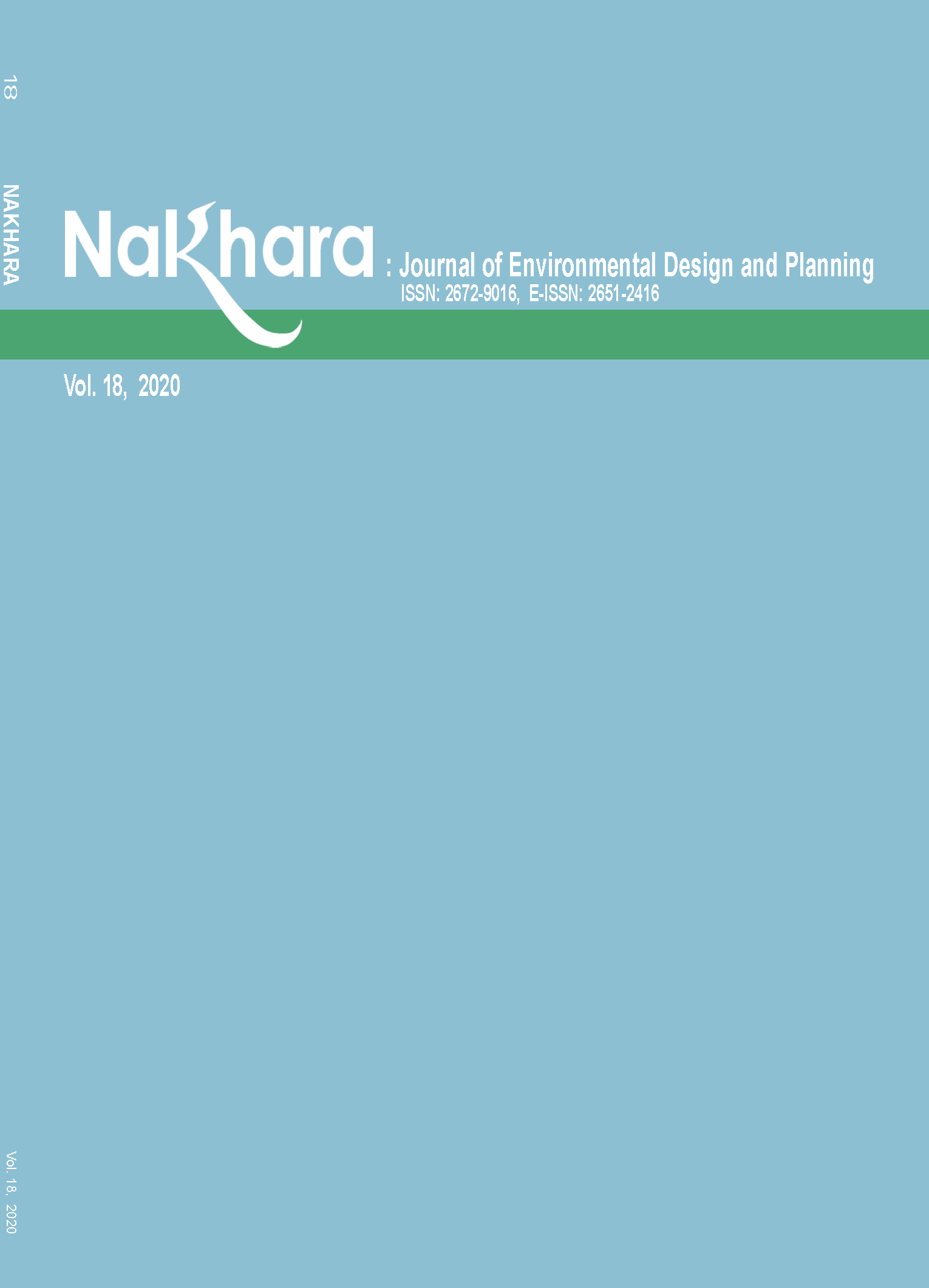A Generic Scenario on Urban Sustainability of a Historical City Center
Main Article Content
Abstract
In discussion on modern urban development issues, many researches have focused on those newly expanded areas, yet few researches have scrutinized what contributes to the vibrant life of the historical Central Business District (CBD) in inner cities. This research has examined a declined old city centre in central Taiwan by deploying Space Syntax analysis to verify possible contributions of parts-whole street network disconnection to the death of CBD in inner cities. The research findings suggest that linearity and critical street segments being properly integrated with the whole arterial street network could be crucial for future city planning.
Article Details

This work is licensed under a Creative Commons Attribution-NonCommercial-NoDerivatives 4.0 International License.
References
Aleksandrowicz, O., Yamu, C., & Van Nes, A. (2019) Spatio-Syntactical Analysis and Historical Spatial Potentials: The Case of Jaffa-Tel Aviv, Journal of Interdisciplinary History, 49 (3), 445-472.
Booth, G., Leonard, B., & Pawlukiewicz, M. (2002) Ten Principles for Reinventing Suburban Business Districts,
Washington, D.C.: ULI–the Urban Land Institute, U.S.A.
Center for GIS at The Research Center for Humanities and Social Sciences (RCHSS) Academia Sinica. (2008-2020)
Hundred Year Topographic Map of Taiwan, http://gissrv4.sinica.edu.tw/gis/taichung.aspx
Chen, J. (2012) From Provincial Capital to Taichung City: The Rise and Development of A City (1895~1945), (text
in Chinese), Tainan: National Museum of Taiwan History.
Civil Affairs Bureau of Taichung City Government, Retrieved 3 September, 2016: http://eng.taichung.gov.tw/ct.aspx?xItem=21703&ctNode=843&mp=1
El-Dahdah, F. (2005) Case: Lucio Costa Brasilia’s Superquadra, New York: Prestel Publishing.
Garreau, J. (1992) Edge City: Life on the New Frontier, New York: Anchor Books, A Division of Random House, INC.
Gruen, V. (2017) Shopping Town. Designing the City in Suburban America, Ed. and Transl. A. Baldauf,
Minneapolis: University of Minnesota Press.
Hillier, B. (2009) Spatial Sustainability in Cities: Organic Patterns and Sustainable Forms, 7th International Space
Syntax Symposium, (pp. 16-35). Stockholm: KTH School of Architecture.
Hillier, B. (1996) Space Is the Machine, Cambridge: Cambridge University Press.
Hillier, B., Hanson, J. (1984) The Social Logic of Space, Cambridge: Cambridge University Press.
Holston, J. (1989) The Modernist City: An Anthropological Critique of Brasilia, Chicago: The University of Chicago
Press.
Huang, H., Chen, K. (2008) Mark of Taichung-Geography (Chinese title: Taichung Shi Zhi-Di Li Zhi), (text in Chinese), Taichung: Taichung City Government.
Jacobs, J. (1962) The Death and Life of Great American Cities, London: Jonathan Cape.
Krohn, C. (2003) Order and progress. Oscar Niemeyer, urbanist, In P. Andreas, I. Flagged, (Ed.), Oscar Niemeyer:
A Legend of Modernism, (pp.37-44). Frankfurt am Main: Detaches Architecture Museum.
Le Corbusier. (1967) The Radiant City: Elements of a Doctrine of Urbanism to be Used as the Basis of Our
Machine-Age Civilization, New York: Orion Press.
Lin, Ching-Kai. (2015) A Study on the Correlation between Urban Street Network and Commercial Distribution
Patterns through Space Syntax Methodology–A Case Study in Taichung, Taichung: Tunghai University.
Shen, Z., Lai, S., Hu, Y., & Chu, C. (1979) Elaborated Taletelling of Taichung (Chinese title: Xishuo Taichung), (text in Chinese), Taipei: Linking Publishing.
Shiu, C. (2015) Urban Form and Hollowness in Taichung Old Downtown (Research project report granted by
Taichung City Government), Taichung: Tunghai University.
Urban Task Force. (1999) Towards an Urban Renaissance, London: E & FN Spoon (Taylor and Francis Group plc).
Yang, T. & Hillier, B. (2019) Spatial Discontinuity in the Multiscaled Area Structures of the Central Historic Districts of London and Beijing, Proceedings of the 12th Space Syntax Symposium, (228, 1-30), Beijing: JiaoTong University.

